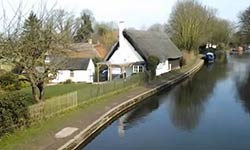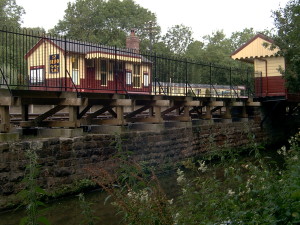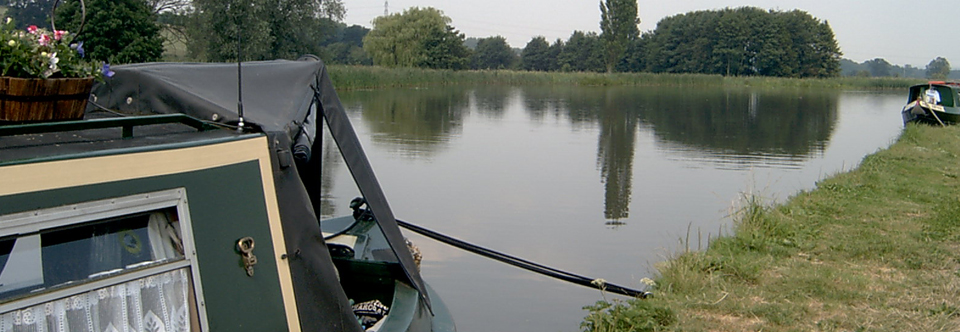In the UK, it was the start of Industrial Revolution that saw the emergence of the canal network and the growth of the narrow boat as a viable means of transport. When you walk along one of Britain’s thousands of miles of towpaths, you are walking back into history. There are around 3000 miles of waterways that are navigable by a wide variety of craft, from traditional narrow boats to wide beam craft.

The Ship at Marsworth
Today, most of the canal system tends to be administered by the Canal and River Trust (the new name for British Waterways) and one of the greatest points of this heritage-rich amenity is that it is free to visit. You don’t have to pay a thing to walk along a towpath and see 200 year old transport system at work.
The canal system falls into two distinct categories – narrow canals and wide canals and waterways. It should therefore be fairly obvious that a narrow boat can utilise both canals whereas the wide beam craft is restricted to wide canals only. So – why the difference?
Narrower canals needed less digging with smaller locks and canal bridges compared to a wide beam canal – all of which reduced costs. However, it also meant that narrow boats had to be restricted in size. Today, the accepted maximum length and width of a narrow boat is around 72 feet by a little less than 7 feet, although this can vary from canal to canal. Their box-like hulls were slab-sided and were originally constructed of wood. Later boats were built of iron and wood, and finally all-steel hulls became the norm.
The first purpose built canal is widely accepted to be the Bridgewater Canal, built to remove cargo from underground mines owned by the Duke of Bridgewater. Today’s familiar working boats or narrow boats are of the same basic shape as the boats used in these mines, because the first locks were built to accommodate these boats, and subsequent boats were built to fit the locks. It’s no accident that a narrow boat fits exactly into a narrow lock! Today’s narrow boats come in all sizes, from around 25 feet up to 70 feet, but all have the vital beam dimension of 6ft 10in, They are still the most popular type of boat for canal cruising. There are plenty of small cruisers suitable for use on inland waters, though, and many of these have the added advantage that it is possible to trail them, giving access to waterways far from the home base and to waterways that are not connected to the main system.

Consall Forge Station
Locks are the means by which a canal boat – be it a narrow boat or a wide beam craft – negotiate hills. Some locks are grouped into ‘flights’ and these can be daunting for even an experienced crew! For example, the Tarbigge Flight on the Worcester and Birmingham Canal has 30 locks but perhaps even more of challenge are the Hatton Flight near Warwick on the Grand Union Canal which, whilst it has ‘only’ 21 locks, are tightly spaced around a hill, giving hardly any respite to a boat’s crew.
Whatever type of boat you consider, don’t be tempted to go wider than 6ft 10in if your main interest is canal cruising. A glance at any canal map will demonstrate the frustration of owning a boat wider than this: narrow connecting canals will make some routes inaccessible, the narrow Northampton Arm from the Grand Union to the Nene being a prime example. The length is also a consideration – a 70-foot boat, for example, will be too long for the Leeds and Liverpool, where the locks are around 60 feet long, and it is not possible to explore the Middle Level in a boat that is more than 49 feet long. Generally if your beam and length are appropriate, then draft and headroom shouldn’t be a problem. For general guidance, a boat drawing less than 2ft 6in should be able to navigate all waterways without any trouble. If you have a boat with a draught greater than this you should check first: the maximum dimensions are given in the extensive selection of navigation guides available today.

